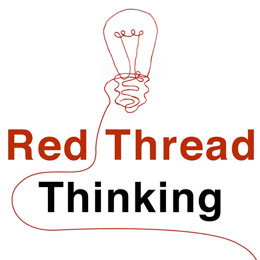25 years ago, 33-year-old British scientist Tim Berners-Lee created one of the greatest tools the human race has ever seen. The World Wide Web opens doors for billions of people worldwide and makes the impossible possible - plus, Innovate My School couldn’t exist without Berners-Lee’s invention. Phil Worms, Iomart’s director of Marketing & Corporate Comms, comes to IMS to discuss why the net is so invaluable for education.

Happy Birthday World Wide Web! It is 25 years since a young British computer scientist named Tim Berners-Lee submitted his idea for allowing scientists to share information between educational faculties across the world to his manager at CERN. The idea that his boss described as a “vague, but interesting” started a revolution in learning which continues today. It has changed the way we teach, the way we learn and how we access information and communicate with each other.
Before the World Wide Web entered the classroom, we learned by rote from a teacher who wrote things on the blackboard with white chalk – the traditional ‘talk and chalk’ approach. If we wanted to source or research information, we either made notes, referred to our text books or visited a library. This doesn’t compute for the school child of today. Today’s students are better connected, have millions of sources for reference and are more globally aware than ever. It’s quite incredible how much knowledge can be accessed at the click of mouse or the swipe of a screen.
On 30th January, Theresa Eicholz publishes another thoughtful article from San Antonio, Texas; this time on how to think outside the box, leaving the instructions behind....

“The real value of the Lego set doesn’t come until the kid takes it apart and realizes they’ve lost the instructions.” - Randy Rogers
In his TCEA 2014 presentation, “Failure to Innovate,” Randy Rodgers stated the above quote, and I realized that it really says a lot about the problems in education today. Our students are far too reliant on following directions, and so many are afraid to deviate in order to do some creative thinking. I remember my daughter being the same with an old Lite-Brite we had inherited from a friend. She loved it as long as there were papers she could stick on it to make the designs. But as soon as we ran out of the papers, she didn’t know what to do. When I suggested she make up her own designs, she looked at me like I was crazy. As parents and teachers, we need to find ways to encourage creation, rather than only rewarding products that basically just prove our students know how to follow directions.
I’m constantly reading articles in broadsheets, such as; “We’re so well educated - but we’re useless” and “The dead hand of central government is weighing down on children and schools”. It’s obvious that the government’s curriculum reforms, as well as proposals to devalue vocational courses, really has meant that schools and colleges need to be creative and look at more innovative strategies to link learning to real life. We need to realise that the pressures of exam results run the risk of turning students into examination machines without actually preparing them for life.

As educators, every so often we get stuck. It is easy to lose perspective when we meet an obstacle. The daily grind can put limitations on our ability to make the connections necessary to make a leap forward towards success. Instead of getting frustrated, bored or irritated, you can use the skills you already obtain to develop, with a little confidence, brilliant and practical innovations for everyday living.
Ideas can be built from scratch. In this video Debra Kaye, the author of Red Thread Thinking and the Red Thread, can show us how just by solving an everyday problem, we can innovate. The things we don’t like, and the things that bug us, are a great place to start. Chances are if it bothers us, then other people may find it irritating too. These unhappy people are our market, and the red thread can begin to show us a solution that is an innovation waiting to be carried out.

For many years the teaching profession has been familiar with the term ‘best practice’; sharing what is working well in one setting so that it might be implemented in another. It is happening within schools, between schools at conferences and TeachMeets, and online through both ‘top-down’ websites and ‘bottom up’ blogs from teachers.
Even the recent review of the English National Curriculum has been influenced by a comprehensive review of ‘best practice’ in different subjects from across the world (DfE, 2012). There is a problem with taking such practice at face value. The ‘best practice’ that is often held up is Finland due to the high levels achieved in international PISA league tables (OECD, 2009). However, when looking at international comparisons ’best practice’ is only part of the story. Practice in schools is coupled with the Finnish culture, which places a high value on academic achievement, and a high status for their teaching profession. How can we replicate Finnish achievement unless we take the complexities of Finnish culture and implant them on the English?

A community-driven platform for showcasing the latest innovations and voices in schools
Pioneer House
North Road
Ellesmere Port
CH65 1AD
United Kingdom